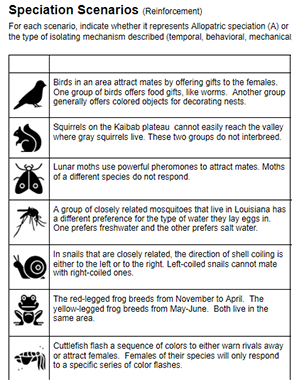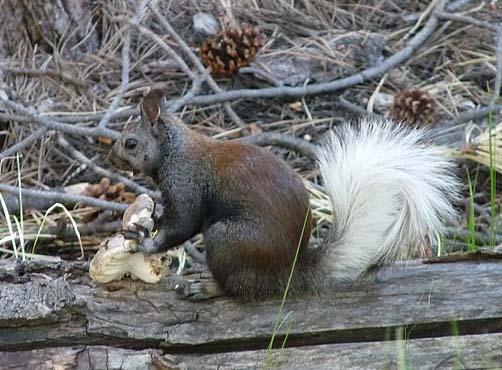
I use this simple worksheet helps students distinguish between allopatric and sympatric speciation. They read short scenarios and identify what types of isolating mechanisms are being described. For example, one scenario reads “Squirrels on the Kaibab plateau cannot easily reach the valley where gray squirrels live. These two groups do not interbreed.”
Students would write that this type of speciation is allopatric speciation with geographic isolation. Other scenarios on the list describe behavioral isolation, chemical isolation, and temporal isolation. Most of the scenarios are based on real life examples, such as lunar moths and Kaibab squirrels.
The second page shares several images depicting speciation (allopatric, sympatric, and then parapatric). For this section, students use the images to visualize speciation and describe the events that are occurring. This is an area that beginning students might have difficulty with, I usually have students write a description and then we revise definitions as a class.

Overall, this activity is intended as a reinforcement or practice after students have read about the formation of new species in Openstax Biology. Also, as a class, we review the Google Slides on the subject. I did not intend this activity to be a high level assignment, just practice. As such, I usually would not grade this type of exercise, but would instead go over with the students and have them correct their own answers.
I also give students a more extensive worksheet on speciation: Speciation Modes. In this activity, students use a module at Learn.Genetics to explore different types of reproductive barriers. For AP Biology students, I have them examine data on finches from Daphne major in this case study that examines real data on bird nesting locations, song differences, and phenotypic differences between two distinct populations of finches living on a single island.


